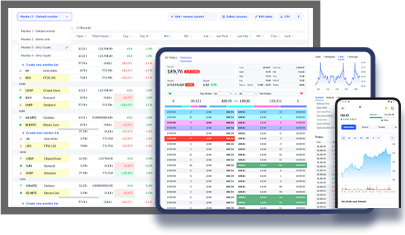Cisco Looking To Tap Growing Smart-Grid Market
18 Mai 2009 - 2:30PM
Dow Jones News
Cisco Systems Inc. (CSCO) wants to tap into the growing interest
in upgrading the energy infrastructure using its networking
gear.
The networking titan, which has aggressively sought new avenues
of growth as its core router and switching business slows, laid out
on Monday the details of its smart-grid strategy. It plans to use
its gear to help with the automation of power distribution, provide
energy management products for the home and businesses, and upgrade
utilities companies' data centers.
The hot topic of smart-grid investment has attracted a number of
different players, including the wireless carriers, which plan to
hook up utility meters with a cellular connection. International
Business Machines Corp. (IBM), meanwhile, is financing energy
projects, while the U.S. government has promised $4 billion under
the stimulus plan for smart-grid deployment.
Cisco believes the smart-grid infrastructure market size could
be worth more than $20 billion a year for the next five years,
although some have called the projection overly optimistic.
"The opportunity is real," said Judy Lin, the general manager of
Cisco's ethernet switching technology group. "Smart-grid is one of
the top priorities and key market adjacencies for Cisco."
Chairman and Chief Executive John Chambers will talk about
Cisco's push into the smart-grid field during a speech at a
JPMorgan conference later Monday. He referenced the opportunity
during the company's quarterly conference call earlier this
month.
The smart-grid market is still in its infancy, so it's still
unclear how quickly Cisco will be able to see revenue from the
business.
"The environment is really going to play a part in how quickly
this becomes a big market opportunity everyone thinks it will be,"
said Jason Marcheck, an analyst at Current Analysis. "Cisco has a
comprehensive vision on how they want to approach it, so that bodes
well."
True to its core business, Cisco plans to use its networking
expertise as a platform for energy management.
For utility companies, that means proposals to build a large
Internet-based communications network on top of the power grid. The
facilities would house virtual data centers the company has begun
pitching. The company hopes its technology will help it manage the
flow of power more efficiently.
"The biggest challenge with energy management today is matching
supply with demand," Lin said, noting that demand has outpaced
transmission growth by 25% a year.
Cisco plans to sell energy-management tools, which would look
something like its Linksys routers, to consumers and small
businesses to help them keep track of their power consumption and
possibly cut down on energy bills.
"We see it as another way to gain more mindshare in the consumer
marketplace," Lin said.
But Marcheck noted that it's still unclear whether consumers
would want those tools in their home, particularly if they view
them as intrusive.
Cisco also faces a lot of competition. The stimulus money has
drawn a lot of companies eager to tap into this potential
market.
"It's going to be a free-for-all," Marcheck said. "Everyone is
putting their vision out there."
Lin said that product announcements would come in the next 12 to
24 months. Cisco already locked up a $220 million deal with General
Electric Co. (GE), FPL Group's (FPL) Florida Power & Light Co.
utility unit, and privately held smart grid technology provider
Silver Spring Networks to upgrade the power grid in Miami.
-By Roger Cheng, Dow Jones Newswires; 201-938-2020;
roger.cheng@dowjones.com

